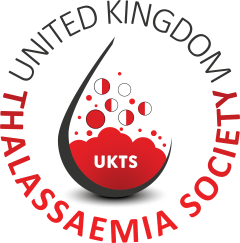Types of thalassaemia

Information
People originating from the Caribbean, the Mediterranean, the Middle East, Africa, Asia and the South Pacific may carry some form of thalassaemia but it’s rare in Northern Europeans.
Thalassaemia is common in these regions because it offers carriers some protection against malaria.
Thalassaemia is a characteristic of the blood. It is inherited, that is, it is passed on from parents to children, like hair, eye or skin colour. It is passed on equally by men and women. It is not contagious and will not turn into an illness.
There are two main types of thalassaemia: alpha and beta.
Alpha Thalassaemia:
Affected individuals show reduction in haemoglobin and red blood cells production. A reduction in the amount of haemoglobin prevents enough oxygen from reaching the body’s tissues, while a shortage of red blood cells can cause pale skin, weakness, fatigue, and more serious complications.
There are two genes associated with alpha thalassaemia HBA1 gene and HBA2 gene, people have two copies of these genes in each cell. Each copy is called an allele.
For each gene, one allele is inherited from a person’s father, and the other is inherited from a person’s mother.
These genes provide instructions for making a protein called alpha-globin. The alpha globin genes are located close together in a section of chromosome 16 known as the alpha-globin locus. A child inherits one allele for each gene from each parent (four alpha globin alleles). There are four types of alpha thalassaemia, the types of are determined by the loss of some or all of these alleles:
1. Alpha thalassaemia silent carrier. One allele is missing or damaged, individuals typically have no thalassaemia-related signs or symptoms.
2. Alpha thalassaemia carrier. Two alleles are missing, tend to cause few or no health problems.
3. Haemoglobin H disease. Three alleles are missing
4. Alpha thalassaemia major. All four alleles are missing
Missing three or four alleles can cause health problems. The more severe type is alpha thalassaemia major or haemoglobin Bart hydrops fetalis syndrome, which is also called Hb Bart syndrome. The milder form is HbH disease. In these two conditions, the cells produce abnormal forms of haemoglobin called haemoglobin Bart (Hb Bart) or haemoglobin H (HbH). These abnormal haemoglobin molecules cannot effectively carry oxygen to the body’s tissues resulting in anaemia and other serious health problems associated with alpha thalassaemia.
Beta Thalassaemia:
This form of thalassaemia caused by reduced or absent synthesis of the beta chains of haemoglobin, the low levels of haemoglobin lead to a lack of oxygen in many parts of the body. Affected individuals also have a shortage of red blood cells, which can cause pale skin, weakness, fatigue, and more serious complications.
Beta thalassaemia is classified into three types depending on the severity of symptoms:
1. Beta thalassaemia minor (also called beta thalassaemia trait). People with beta thalassaemia minor may have mild anaemia, but usually don’t need any medical treatment.
2. Beta thalassaemia intermedia. People with beta thalassaemia intermedia have moderately severe anaemia and some will need regular blood transfusions and other medical treatment.
3. Beta thalassaemia major (also called Cooley’s anaemia). People with beta thalassaemia major have severe symptoms and life-threatening anaemia. They need regular blood transfusions and other medical treatment.
Beta thalassaemia carriers are healthy and do not know that they are carriers unless they have a special blood test carried out. This blood test can be done by your GP and the result should be known within two weeks. The difference between a carrier and a non-carrier is that the red cells of the carrier are slightly smaller than those of the non-carrier. This is sometimes mistaken for iron deficiency anaemia and iron is prescribed. Thalassaemia carriers should not take iron unless they need it. The iron level in the blood must be measured to see if iron intake is really needed.
Some common variations
If a child inherits beta thalassaemia from one parent and Hb E, Hb O Arab or Hb Lepore from the other parent, then the child will have a type of thalassaemia. If this happens the child may develop medical problems associated with beta thalassaemia intermedia or beta thalassaemia major.
If a child inherits beta thalassaemia from one parent and sickle cell from the other parent, then the child will have a type of sickle cell disease called “sickle beta thalassaemia”. If this happens the child may develop medical problems associated with sickle haemoglobin.
If your child is a carrier of beta thalassaemia it’s advisable for you as parents to find out your haemoglobin types to determine if there is any risk of serious haemoglobinopathy in future pregnancies. It’s also advisable to test any other children in your family.
